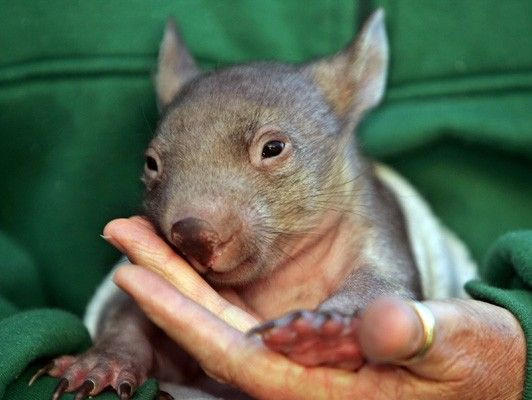Modern Humans In Australia Lived Alongside Its Unique Megafauna 65,000 Years, Study Says

A study published Wednesday in the journal Nature suggests ancestors of Australian Aborigines coexisted with gargantuan Australian animals like giant wombats and wallabies, setting back the date humans first inhabited the continent by at least 5,000 to 18,000 years, the New York Times reported.
A new excavation at an Aboriginal rock shelter called Madjedbebe yielded human relics that date back to 65,000 years ago.
Read: Johnny Depp’s Business Manager Claims Actor Was Aware It Was Illegal To Bring Dogs To Australia
Previous archaeological evidence indicated humans may have first migrated to Australia somewhere between 47,000 and 60,000 years ago. “We were gobsmacked by the richness of material that we were finding at the site: fireplaces intact, a ring of grind stones around it, and there were human burials in their graves,” said Chris Clarkson, an archaeologist from the University of Queensland, Australia and lead author of the study.
“No one dreamed of a site so rich and so old in Australia,” He added.
Australia, once part of the supercontinent Gondwana, remained isolated for a relatively long time and is endowed with unique flora and fauna.
Humans have also been implicated in the extinction of Australia’s unique megafauna, this study places people in Australia more than 20,000 years before the continent-wide extinction, suggesting otherwise.
According to Tourism Australia – Australia’s official tourism website, more than 80 percent of the continent’s plants, 378 mammal species, 828 bird species, 4000 fish species, 300 species of lizards, 140 snake species, two crocodile species and around 50 types of marine mammals are unique to it.
Some of Australia’s most iconic animals include the kangaroo, koala, echidna, dingo, platypus, wallaby, emu and wombat. Australia also has the World Heritage-listed Great Barrier Reef, the largest coral reef in the world.
While a subject of much mockery by travelers, Australia’s strict quarantine laws are in place for biosecurity as its unique ecosystem has been devastated in the past, the Washington Post reported.
According to the Sydney Morning Herald, Australia’s first red fire ant ‘incursion’ in 2001 and similar incidents later led the government to spend about $209 million on its eradication, given its threat to livestock, pets and people.
In 2007, an Asian honey bee nest inside the mast of a ship devastated commercial and native bee populations. The bees now compete with native bees and affect crop pollination.
Read: Great White Shark Surrounds Australian Family's Boat
The cane toad from Central and South America is unique in that it was introduced deliberately with the intention to control the local cane beetle population. However, the toads failed to curb the beetle population and began to thrive in the new environment. National Geographic reported the toads now number in millions and have become pests the Australian government is trying to control.
The Asian black-spined toad, with a poison gland, is suspected to have hitchhiked into Australia on tourists’ luggage. They are prolific breeders — with females laying about 40,000 eggs at a time — and could end up being more damaging than the cane toad.
Australia’s quarantine and customs laws are available at www.australia.gov.au
© Copyright IBTimes 2024. All rights reserved.






















